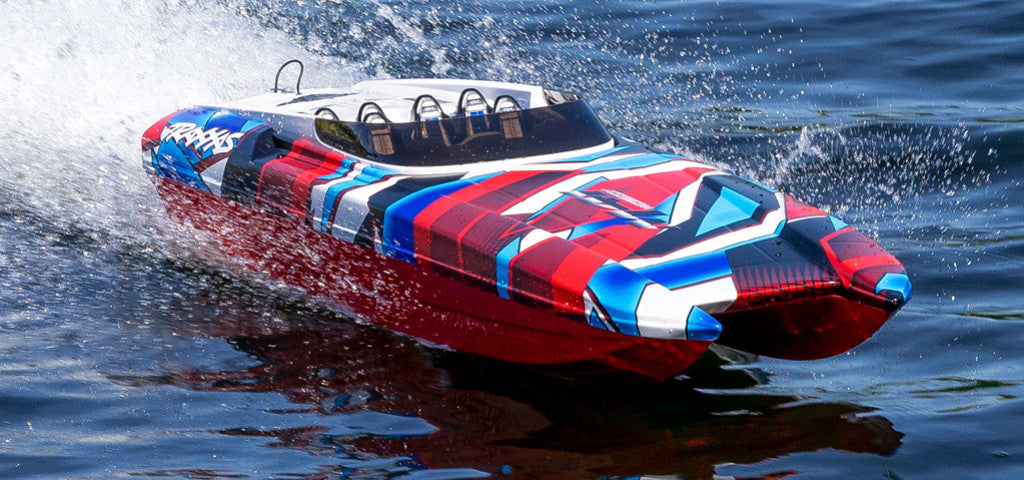Are you passionate about RC boats and looking to get started in this adventure? Or perhaps you are already an RC boating enthusiast and want to learn more about the different types of boats available on the market? In this article, we will introduce you to the main types of boats, the different materials used for the hull, the basic components of an RC boat, and some tips for learning how to sail.
The different types of boats
The V-shaped monohull motorboat
The V-shaped monohull is the ideal choice for beginners. The V-shape of the hull gives it great stability and good handling in difficult conditions. Although slightly slower than other types of boats, the deep V monohull is versatile and forgiving to drive. The { {614f12247198b71b5289fd0ef18cfbe3}} Traxxas Blast Race, the Kyosho Jet stream 888, and the ProBoat Recoil 2 26" Deep-V are examples of deep V monohulls with high performance.
The catamaran motor
The catamaran offers a good balance between speed and stability. Its design, with two hulls connected by a deck and a central tunnel, reduces the surface area in contact with the water and promotes better lift. The catamaran is less comfortable in rough waters than the deep V monohull, but it turns better and remains fairly stable. Le Traxxas DCB M41, the Kyosho Hurricane 900 or the ProBoat Blackjack 42" are examples of high-performance catamaran.
Radio-controlled sailboats
RC sailboats are another option for those looking for a more peaceful, wind-dependent sailing experience. These boats are propelled by the force of the wind on their sails and require a good understanding of sailing principles to master. RC sailboats offer a relaxing and stimulating experience for sailing enthusiasts.
Different types of hull materials
Plastic hulls
Plastic hulls, often made of ABS, are very common for bateaux RTR (Ready-To-Run) and offer good performance. Lightweight and durable, they are also more economical than fiberglass hulls. For recreational use, ABS hulls are ideal.
Fiberglass hulls
Fiberglass hulls offer excellent strength and a superior finish for painting. The thickness of the fiberglass can vary: thin fiberglass is lightweight but can deform, while multi-layer fiberglass is stronger and more rigid but can be slightly heavier.
Carbon fiber hulls
Carbon fiber is very strong and lightweight, but expensive. It is particularly suitable for racing boats where lightness is essential and is sometimes found on high-end models.
Piloting your remote-controlled boat
Preparing the boat before launching
Before launching your remote-controlled boat, be sure to follow these steps:
- Fully charge the battery.
- Check that all components are properly connected and in good condition.
- Test the range of the remote control to avoid losing control of the boat while sailing.
- Launch your boat in a suitable location, such as a pond, lake, or calm, obstacle-free pool.
Learning to sail
To sail your remote-controlled boat correctly, keep these tips in mind
:- Start slowly and familiarize yourself with the controls.
- Practice turning left and right, as well as accelerating and braking.
- Avoid sailing near other boats, swimmers, or obstacles to prevent accidents.
- Follow local boating rules and regulations.




